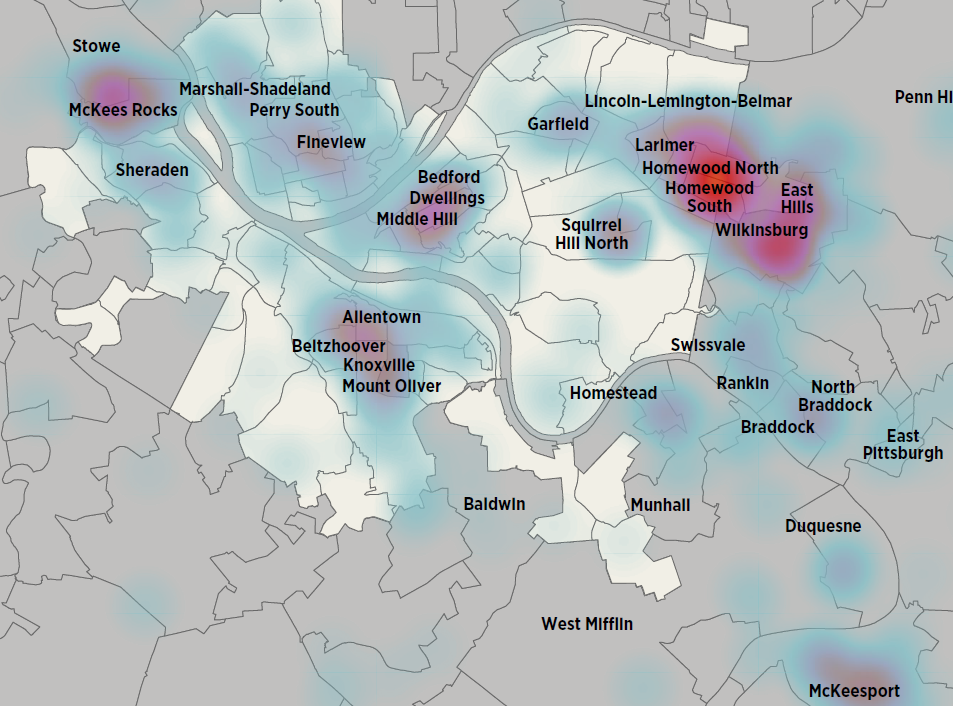Making good, informed decisions about how to allocate limited resources is an ever-evolving process. The Allegheny County Department of Human Services (DHS) strives to make the most equitable decisions when allocating scarce resources for individuals and families in need. Housing is a critical resource for which demand far exceeds supply; thus, DHS is dedicated to making sure that those most at need have priority for the housing services that are available. Since 2017, DHS has developed predictive risk models that utilize administrative data to assign a risk score that is used to determine the appropriate course of action. Two of these models were developed to support prioritization of housing resources.
Allegheny Housing Assessment (AHA)
In 2020, DHS launched the Allegheny Housing Assessment (AHA), a decision support tool designed to help prioritize admissions to supportive housing services for individuals or families experiencing homelessness. The AHA forms the infrastructure for DHS’s coordinated entry system for those in a housing crisis.
The tool uses administrative data from Allegheny County’s data warehouse to predict the likelihood of three types of events occurring in a person’s life if they remain unhoused over the next 12 months: 1) a mental health inpatient stay, 2) a jail booking and 3) frequent use (4 or more visits) of hospital emergency rooms. These events serve as indicators of harm if a person remains unhoused. The AHA assigns a risk score that is used as part of the housing prioritization process; it is far more objective and unbiased than earlier assessment tools and it doesn’t require the time or trauma associated with asking sensitive questions at the time of housing crisis.
Select from the following documents to learn more about the AHA tool:
-
-
- Using Predictive Risk Modeling to Prioritize Services for People Experiencing Homelessness in Allegheny County: Methodology Report for the Allegheny Housing Assessment Tool (September 2020)
- Methodology Update (December 2020)
- Frequently asked questions about the implementation of the Allegheny Housing Assessment tool
- Summary of client feedback on the new housing prioritization process
- Independent ethical/data science review of the Allegheny Housing Assessment
- DHS’s response to the ethical review
-
Mental Health – Allegheny Housing Assessment (MH-AHA)
After a couple of years of experience with the AHA, DHS leadership realized that a similar tool could help prioritize admissions to residential services for individuals with a diagnosis of serious and persistent mental illness. Using the AHA as a starting point, the team developed the Mental Health – Allegheny Housing Assessment (MH-AHA) and launched it in February 2023.
Similar to the AHA, the MH-AHA utilizes administrative data from Allegheny County’s data warehouse to predict the likelihood of two potential types of adverse events that may occur in an individual’s life if they do not receive adequate support for their MH condition over the next 12 months: 1) a mental health inpatient stay and 2) frequent use [4 or more visits] of hospital emergency departments. These events serve as indicators of harm and are things we would like to prevent. The MH-AHA assigns a risk score that is used as part of the prioritization process. Individuals who are not eligible or who do not receive a risk score likely to lead to a placement in the near future will be introduced to other supportive services options instead of waiting a long time on a waiting list for a placement that might not occur.
By prioritizing those most in need of MH residential services, the MH-AHA will simplify the referral process, decrease uncertainty and reduce wait times. In addition, it will help Allegheny County document unmet MH residential needs created by the gap between limited MH residential resources and the number of high-risk eligible individuals. An external impact evaluation by researchers at Stanford will document progress toward these goals.
Select from the following documents to learn more about the MH-AHA:
-
-
- Methodology Report for the Mental Health-Allegheny Housing Assessment Tool (November 2023)
- Frequently asked questions about the implementation of the Mental Health-Allegheny Housing Assessment Tool
- Video overview of Mental Health – Allegheny Housing Assessment Tool to Behavioral Health Providers (July 2024)
-









